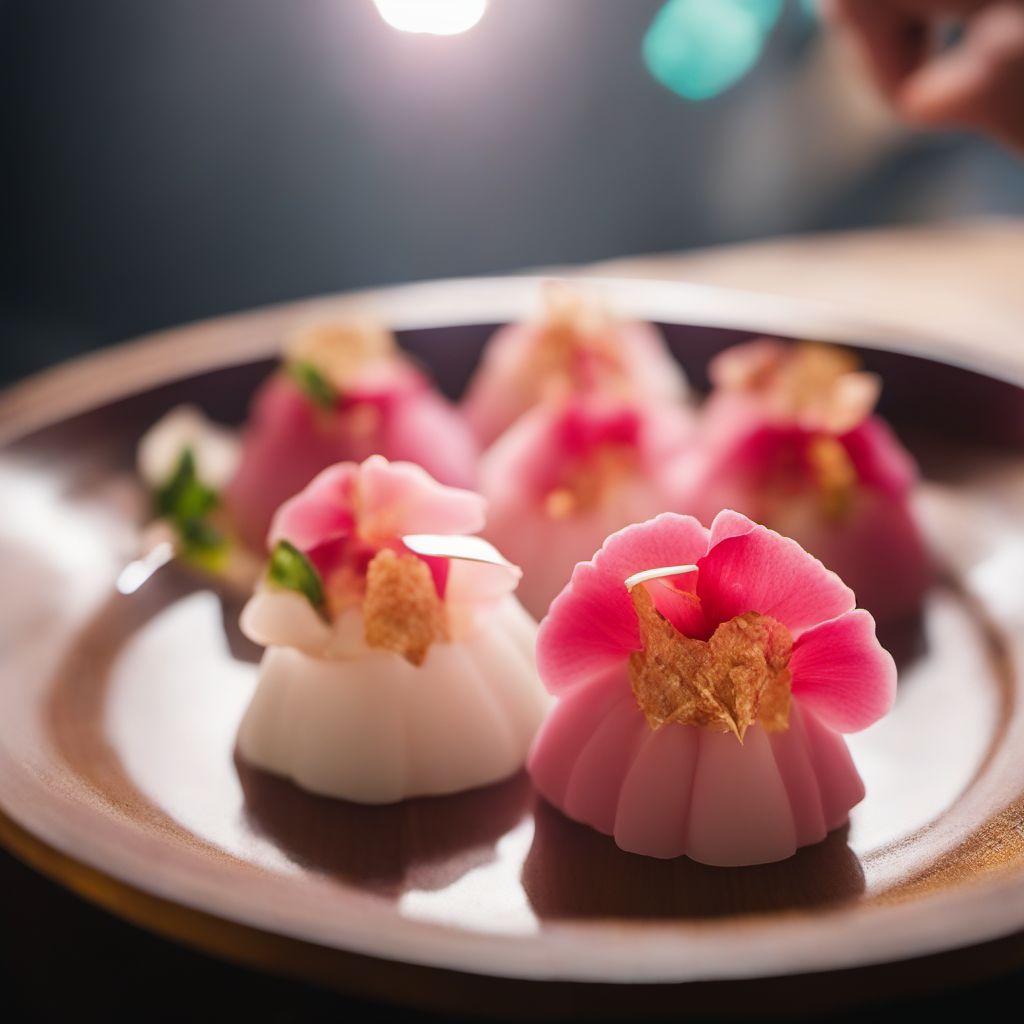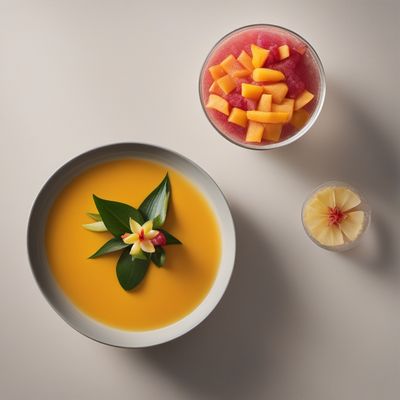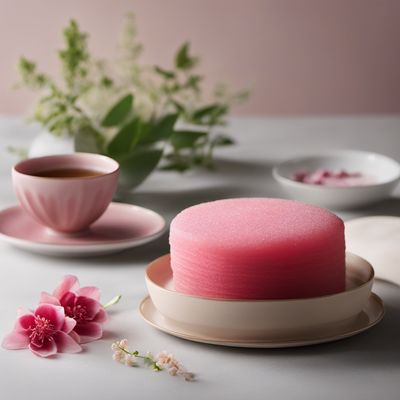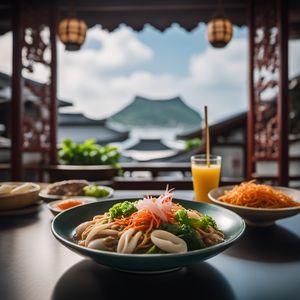
Dish
Namagashi
The confectionery is made by wrapping sweet bean paste in a layer of mochi and shaping it into a small, delicate shape. Namagashi is often decorated with edible flowers or other designs. It has been a popular confectionery in Japan for centuries and is often served at tea ceremonies and other formal occasions. The delicate shapes and designs of Namagashi are meant to reflect the changing seasons and natural beauty of Japan.
Origins and history
Namagashi has been a popular confectionery in Japan for centuries. It is often served at tea ceremonies and other formal occasions. The delicate shapes and designs of Namagashi are meant to reflect the changing seasons and natural beauty of Japan.
Dietary considerations
Namagashi is high in sugar and should be consumed in moderation. It is not suitable for diabetics or those on a low-sugar diet. It is also not suitable for those with a gluten intolerance, as it contains mochi made from glutinous rice.
Variations
Variations of Namagashi include using different types of bean paste, such as red bean or white bean, and incorporating different flavors such as matcha or yuzu.
Presentation and garnishing
Namagashi is presented on a small plate or dish. It is often garnished with edible flowers or other decorative elements. When shaping the Namagashi, it is important to work quickly to prevent the mochi from becoming too sticky. Using a small amount of cornstarch on your hands can help prevent sticking.
Side-dishes
Namagashi is typically served with green tea or matcha. It can also be served with a light, fruity white wine.
Drink pairings
Namagashi is typically served with green tea or matcha. It can also be served with a light, fruity white wine.
Delicious Namagashi recipes
More dishes from this category... Browse all »

Aamras
Indian cuisine

Aasmi
Indian cuisine

Agra petha
Indian cuisine

Aiyùbīng
Taiwanese cuisine

Ajdnek
Slovenian cuisine

Akafuku
Japanese cuisine

Akanés
Greek cuisine

Akumaki
Japanese cuisine




